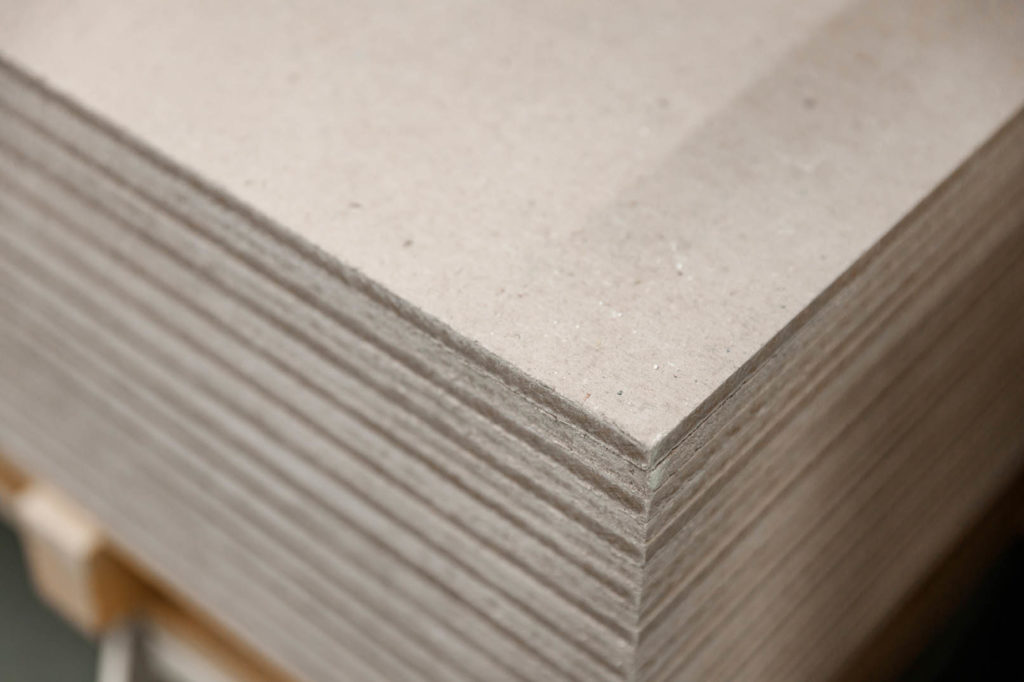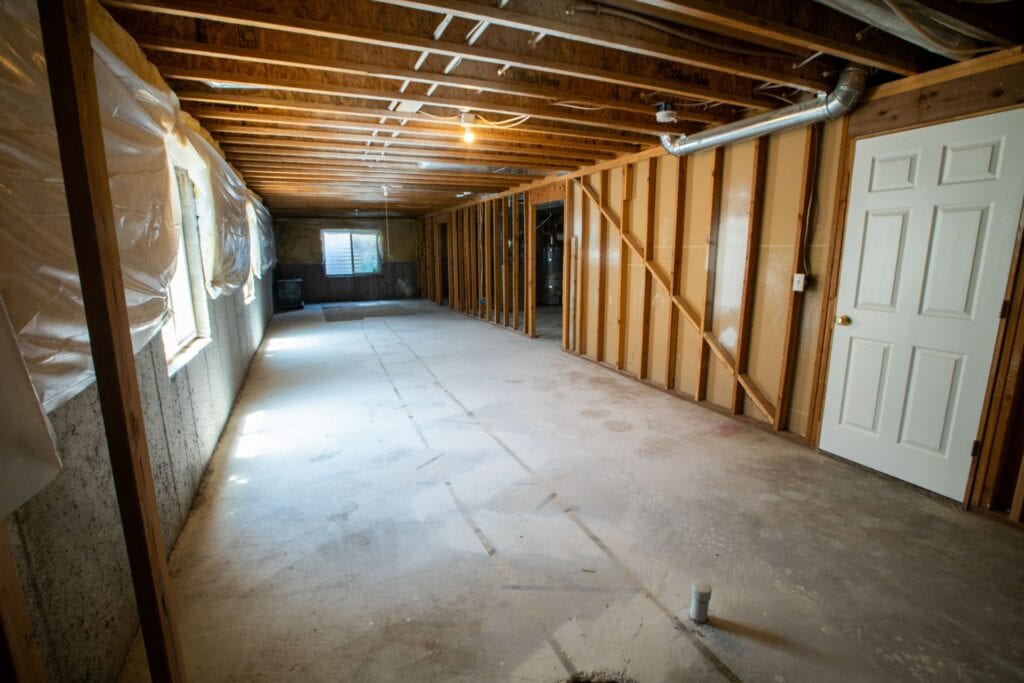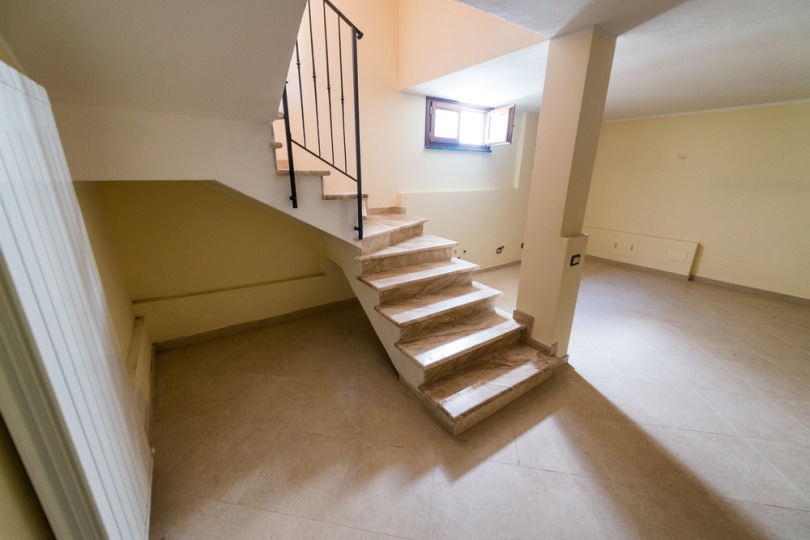How Much Does It Cost to Drywall a Basement? (Updated in 2025)
-
Pete Ortiz
- Last updated:

As the name suggests, drywalling is the construction, setting up, or remodeling of walls without mortar. It is common in American homes as a cost-saving and convenient way to set up walls. Generally, a homeowner spends between $1.5 and $2.5 per square foot on basement drywalling.
However, the amount you spend on a particular project depends on the type of materials, labor rates, and room size. On that note, here is a complete overview of the cost of drywalling a basement.
Cost of Drywalling According to Type
Standard Drywalling
A homeowner will spend roughly $2 per square foot on standard drywall. This type of construction often involves easy-to-source and cheap materials, such as gypsum and papers. Gypsum is a soft calcium compound that leaves behind a flat and smooth surface when sanded down.
While standard drywalling is cheap, the final product is plain and unattractive. So, adding sharp contrasts and bold characters with wall art will beautify the wall. Of course, at a higher price.

Fire-Rated Drywall
Also known as Type X, fire-rated is a special type of basement drywalling for apartments and dormitories. Most people use fiberglass and other flame-resistant materials, which costs over $0.4 per square foot. In addition, you will spend between $1 and $2 per square foot on labor costs. The labor cost of fire-rated drywalling is slightly higher compared to other methods because fiberglass is difficult to work with.
Moisture-Resistant Drywall
Moisture is a constant in the basement. Humid and wet basements often degrade faster so you need moisture-resistant materials.
Greenboard is a perfect type of moisture-resistant construction invented in the 1990s. It is frequently used in very humid areas such as bathrooms to deter mold growth and resist water leakages.
The typical cost of moisture-resistant drywall is over $2 per square foot. But because experts normally use greenboard, you must prepare the wall for mounting. Ideally, this includes cleaning and sanding down loose particles, which are expensive and time-consuming.

Eco-Friendly
In a world obsessed with sustainability, we’d be remiss not to mention eco-friendly drywalling approaches. The majority consider gypsum a suitable candidate for this type of construction because it is eco-friendly, natural, and recyclable.
If you want a long-lasting product, go for gypsum boards. Gypsum boards are a premium solution to interior walls, made by molding gypsum into a ¼–1-inch thick boards to be mounted on walls.
Even though gypsum is cheap, the labor costs of mounting boards are high. So prepare to pay more when using them for basements.
What Do Professionals Look for When Determining the Cost of Drywalling?
Experienced contractors draft invoices according to:
The Size of the Wall
Small basements have small surface areas which will be quick to drywall. Hence, contractors will spend a few hours designing and working on the site. The lesser the hours, the cheaper the cost.

Location of the House
In some states like Hawaii, where the price of a home is close to $1 million, drywalling a basement is expensive. This may be due to the rarity of construction materials, lack of experienced workers, or high living standards.
The same can’t be said in Mississippi, where the average price of a home is almost $160K. Here, homeowners spend much less on basement projects.
The Shape of the Basement
It is easier and faster working on cubicles, unlike on round basements. The latter requires deep knowledge of geometry and enough time to ensure everything falls in the right place. Thus, you will spend more on irregular and round basements.
A breakdown of the relationship between labor requirements and the cost of drywalling a basement
There are six levels of basement drywalling tied to different labor costs.
- Level 0 – This is the initial stage of construction where the structure is set up, and frames are secured in place with studs and screws. You will spend less than $0.6 per square foot on level 0 construction.
- Levels 1 and 2 – A contractor will request between $0.7 and $1.6 to form compound joints and hang the walls.
- Levels 3 and 4 – Spending between $0.7 and $2 on a fully covered, smoothly sanded, and painted wall at this stage is not bad. At this level, the wall is almost done, and a few layers of paint to cover loose gypsum particles will brighten up the basement.
- Level 5 – For just $2.5 per square foot, homeowners will settle in for a glossy and perfect wall.
Cheaper Alternatives to Drywalls
Drywalling is one of the most convenient methods of partitioning or building a wall in the basement. But there are cheaper alternatives you can indulge in.

Plywood
Plywood is one of the hottest trends in indoor projects because it is economical and stunning. Furthermore, a few plywoods cover a large area, but at the expense of reduced durability and susceptibility to rot.
Veneer Plaster
Veneer surfacing is the application of a thin layer of plaster on a substrate. Though the final product is durable, the method is rare in the USA, except in Massachusetts.
Textured Wall Panels
Designers love prescribing wall solutions that will quickly transform a place within the shortest time possible. Textured panels are one of those materials made from plastic or paperboard. You can artistically combine them with an array of lighting fixtures and furniture.
However, paperboard textured wall panels deteriorate when exposed to high humidity. It’s best to avoid them in basements.
 Conclusion
Conclusion
Drywalling is the art of setting up walls with little use of water. In a basement, this method is useful to control moisture build-up and reduce construction costs. On average, you will spend between $1.5 and $2.5 per square foot. Working on irregular rooms that require intricate designs scales up the price.
To slash down costs, look into drywalling alternatives such as textured panels.
- Related read: Drywall Screws vs Nails: Which Should I Use?
- https://www.homeadvisor.com/cost/basements/
- https://www.triadbasementwaterproofing.com/blog/2016/12/6-causes-of-basement-moisture-and-how-to-fix-them/
- https://www.thespruce.com/what-is-greenboard-drywall-1822831
- https://zerodown.com/blog/10-most-expensive-states-to-buy-a-house
- https://learn.roofstock.com/blog/cheapest-states-to-buy-a-house
- https://homegardenguides.com/drywall/cost-to-drywall-a-basement/
Featured Image Credit: Kirill Gorshkov, Shutterstock
Contents


